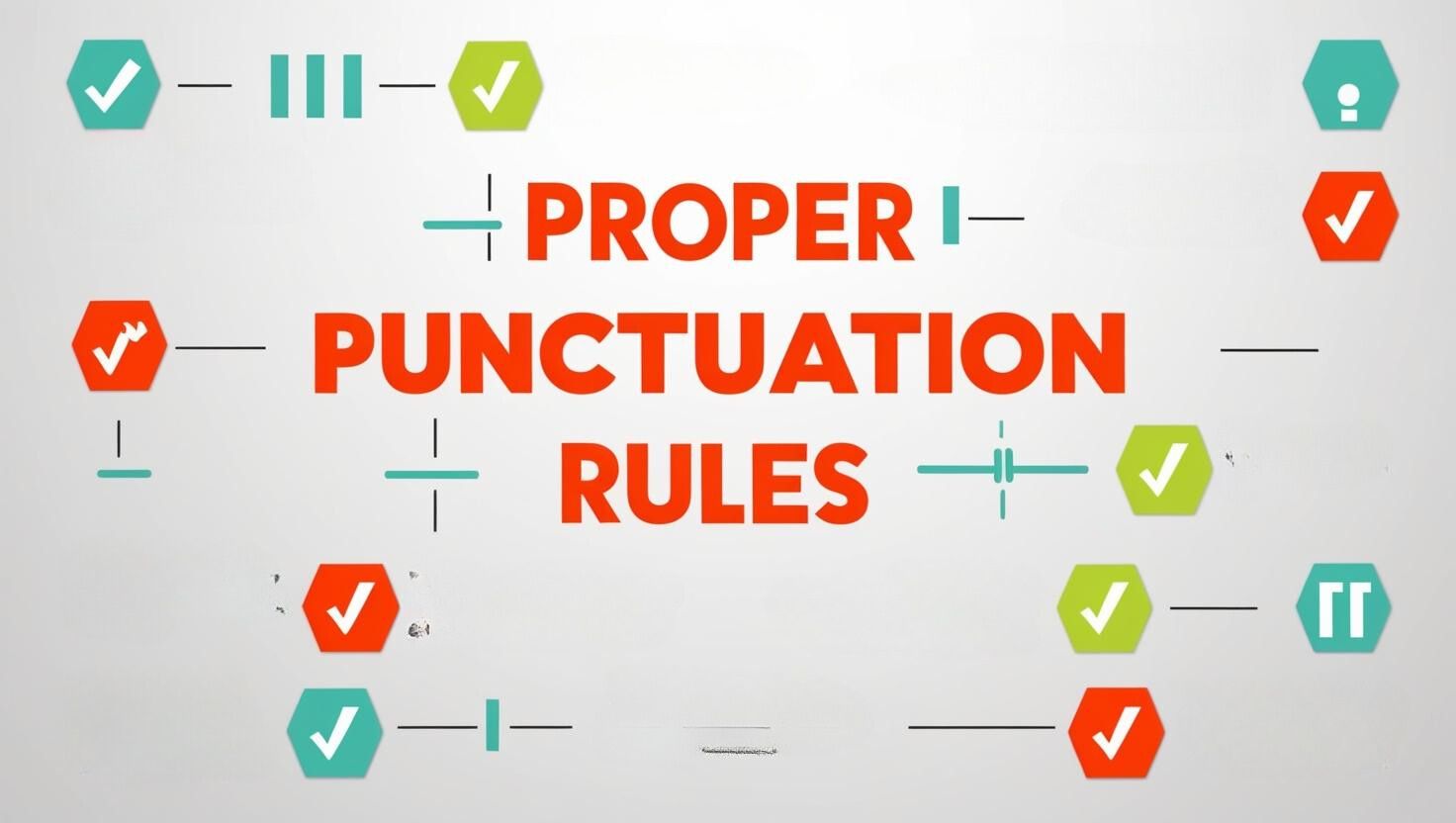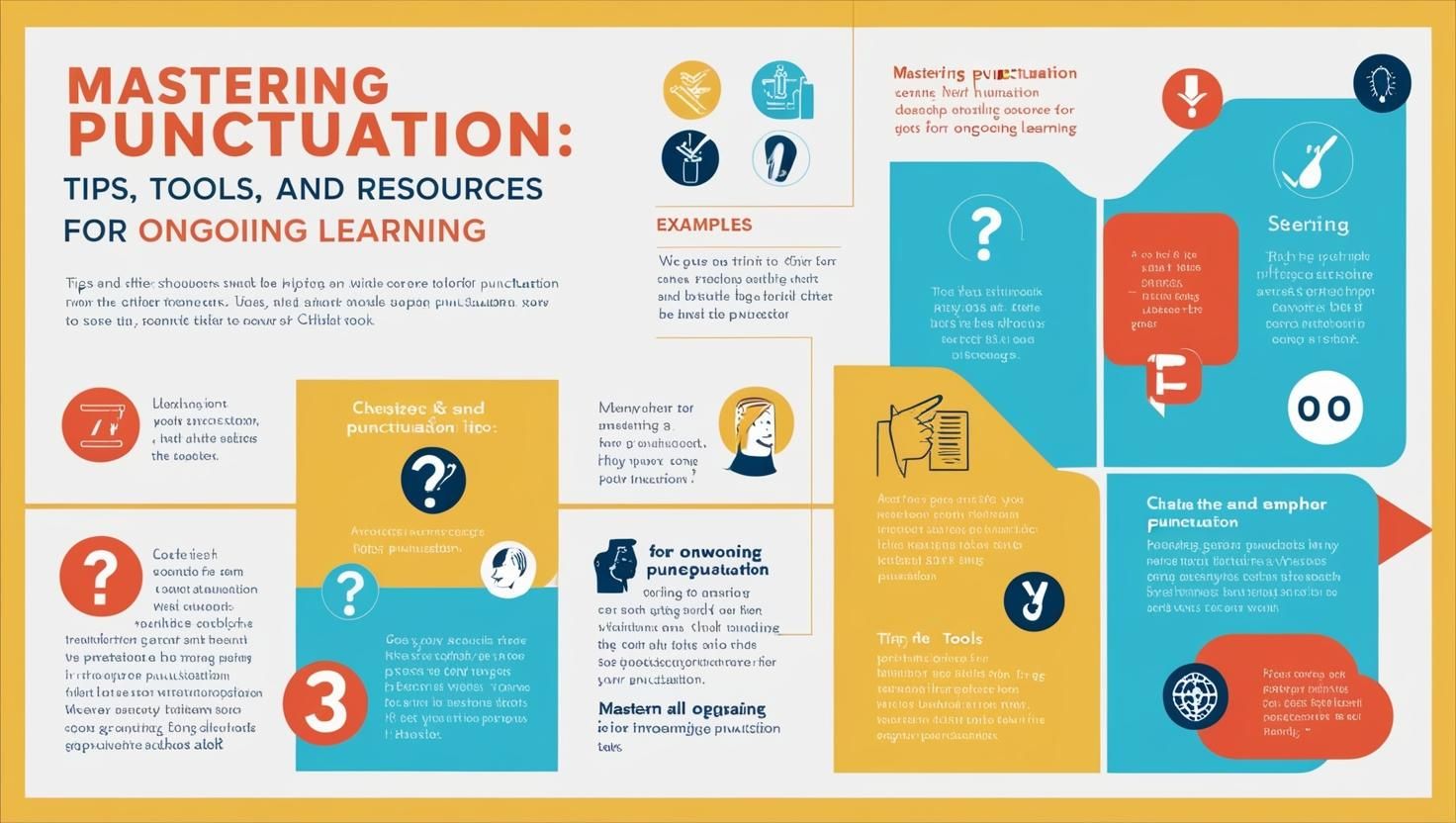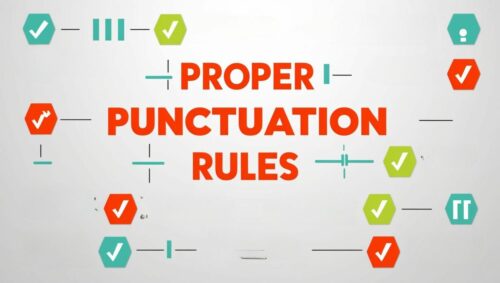Punctuation is like the unsung hero of writing, quietly orchestrating how we understand and interpret text. Imagine trying to read a book or even a simple sentence without any punctuation. It would probably feel like driving on a highway with no road signs, right? Proper punctuation helps guide readers through the nuances of language and gives precise meaning to written words.

For instance, the difference between a question mark and an exclamation point isn’t just about grammar. It’s about the emotion and intent behind a statement. Think about asking someone ‘You’re going, right?’ versus ‘You’re going, right!’ The punctuation at the end makes all the difference, doesn’t it?
We can trace the roots of punctuation back to ancient times when writers realized the need for markers to guide readers through text. Early punctuation marks were simple but crucial, evolving over time to perform complex functions in modern writing. The influence of punctuation extends beyond mere pauses or stops in writing; it affects the tone, mood, and intent, which are essential for effective communication.
And let’s not overlook punctuation’s straightforward role in preventing miscommunication. With the right marks in place, readers can comprehend the intended message without missing a beat. Misplaced punctuation can lead to misunderstandings or even humor through unintended meanings, which isn’t always the writer’s goal.
Understanding how punctuation affects tone can enrich your writing toolkit. It helps convey the right message as you intend it, maintaining the reader’s engagement and ensuring clarity throughout. So, as you embrace punctuation, know it’s more than rules—it’s about making your words shine and truly connect with your audience.
The Basics of Proper Punctuation: Foundational Tools for Effective Writing
Getting friendly with punctuation marks might seem like learning a new dance. Each has its own rhythm and keeps sentences flowing. Whether it’s the assertive period or the pausing comma, these marks are just essential conversation tools.
| Punctuation Mark | Purpose | Examples & Tips |
|---|---|---|
| Period (.) | Ends sentences with a sense of finality and completeness. | Use to close declarative sentences. Avoid overusing in lists for cleaner flow. Example: “I love writing.” |
| Comma (,) | Creates pauses, separates ideas, and clarifies meaning in sentences. | Use to separate items in a list: “I bought apples, oranges, and bananas.” Place before conjunctions in compound sentences: “I was tired, but I kept working.” |
| Question Mark (?) | Indicates a direct question. | Use at the end of questions. Example: “How are you today?” |
| Exclamation Point (!) | Adds emphasis or shows strong emotion. | Use sparingly for dramatic effect. Example: “Watch out!” |
| Apostrophe (‘) | Shows possession or forms contractions. | Use for possession: “Sarah’s book.” Use in contractions: “Don’t forget.” |
| Quotation Marks (“) | Encloses direct speech or quotations. | Use for dialogue: “She said, ‘I’m happy.'” Avoid using for emphasis in formal writing. |
| Colon (:) | Introduces lists, explanations, or examples. | Use for emphasis before a list: “Bring these: a pen, paper, and a calculator.” Avoid overuse for clarity. |
| Semicolon (;) | Connects closely related independent clauses or separates items in complex lists. | Use to link ideas: “I wanted to write; however, I was too tired.” Avoid replacing commas unnecessarily. |
| Dash (—) | Adds emphasis or sets off additional information. | Use for dramatic pauses: “The result was clear—victory.” Avoid overusing for cleaner writing. |
| Ellipsis (…) | Indicates trailing thoughts, hesitation, or omitted material. | Use sparingly for effect: “I was just thinking…” |
| Common Errors to Avoid | Misplaced punctuation can confuse meaning or disrupt flow. | Avoid confusing possessives and plurals: “Its vs. It’s.” Ensure commas don’t scatter unnecessarily. |
Punctuation might seem all about rules at a glance (the sort that many dreaded in school), but it’s really there to help clarify what you mean. Misplaced commas and rogue apostrophes can turn a clear message into a confusing mess. Imagine saying ‘Let’s eat, Grandma’ versus ‘Let’s eat Grandma.’ You get the idea.
Let’s talk about some of the key players here. Commas provide pauses to let your ideas breathe; they’re perfect for breaking up items in a list or setting off clauses. Periods end statements with finality, and without them, sentences would just ramble on forever. Question marks and exclamation points bring forth your intent and emotions at the sentence ends.
It’s also crucial to be aware of easy-to-miss common errors like there/their/they’re slip-ups or random scatterings of commas and periods. Addressing these can lift your writing from just okay to beautifully clear and structured.
Punctuation acts as silent assistants in organizing your thoughts. Admiring the dynamic between grammar and punctuation helps strike the perfect balance, creating text as smooth as a well-mixed playlist. This understanding lets you play with writing, using syntax to your advantage.
So keep punctuation close as you write. These marks aren’t just stops on the page—they’re keys to opening up your writing’s true potential.
Diving Deeper: Advanced Punctuation Techniques and Nuances
Once you’ve got the basics covered, it’s time to explore the more nuanced punctuation marks that can add flair and precision to your writing. These marks, like semicolons and colons, often induce a bit of hesitation—but don’t worry, they’re more approachable than they seem.

Semicolons are the sophisticated cousins of commas. They’re great for linking related independent clauses without conjuring up the heaviness of a full stop. Picture this: ‘I love writing; it lets me express myself.’ The semicolon keeps the connection strong and meaningful.
Colons, on the other hand, act like invitations. They say, ‘Hey, something important’s coming up.’ Use them to introduce lists, quotes, or explanations. Imagine telling someone, ‘You need three things: enthusiasm, patience, and a sense of humor.’
Em dashes, with their versatile flair, inject drama or highlight important information—like this—that warrants attention. They’re the rebels of punctuation, allowing for a lively twist in formal writing.
Ellipses, often appearing as three dots, create suspense or suggest trailing thoughts, as if sayin’, ‘Hang on, there’s more to this.’ Use with moderation to avoid becoming overly cryptic.
Parentheses and brackets add layers or clarification, nudging in extra information without disrupting the main flow. They’re the asides in a conversation, quietly adding value.
Understanding the subtleties of apostrophes is also key. You’ve got contractions like ‘don’t,’ and possessives such as ‘Jane’s book.’ Each placement changes meaning, so keep an eye on context to avoid mix-ups.
Mastering these punctuation tools means you can refine your writing, making it not only clear but also engaging. These marks have power, and knowing when and how to use them adds depth to your style.
Punctuation in Different Contexts: Navigating Varied Writing Styles
How you tweak punctuation can change how it serves your writing. When you’re switching from a casual chat to a formal report, the punctuation game evolves too. Every context calls for its own vibe, affecting how you use those tiny yet mighty symbols.
| Context | Purpose and Style | Key Punctuation Tips |
|---|---|---|
| Formal Writing | Maintains professionalism and clarity. Used in business documents, academic papers, and official reports. | Stick to traditional punctuation rules. Use periods, commas, and colons for structured, clear communication. Avoid overusing exclamation points or dashes to maintain a serious tone. |
| Creative Writing | Enhances storytelling and evokes emotions. Used in novels, poetry, or personal essays. | Use ellipses (…) for suspense or anticipation. Employ dashes (—) for sudden breaks or surprises. Be playful and prioritize the reader’s experience over strict grammatical rules. |
| Academic Writing | Clarifies arguments and respects intellectual rigor. Essential for essays, research papers, and theses. | Use punctuation to structure arguments and citations. Employ quotation marks and parentheses accurately for referencing. Avoid informal punctuation like emojis or excessive ellipses. |
| Digital Communication | Emphasizes speed and casual tone. Common in texting, emails, and social media. | Adapt punctuation for casual and quick interactions. Periods can emphasize points but may seem abrupt in some contexts. Emojis often complement or replace traditional punctuation. |
| General Communication | Adapts to the medium and audience, balancing clarity with tone. | Be mindful of context and the audience’s expectations. Mix formal and informal styles as needed for relatability. Use punctuation to enhance the tone without overloading. |
In formal writing, like business documents or academic papers, punctuation leans towards tradition. This is where your basics—periods, commas, colons—shine brightly, keeping everything professional and clear. Overusing exclamation points or dashes here might distract from the serious tone.
Conversely, creative writing enjoys breaking conventional rules. Punctuation in storytelling can be playful—using an ellipsis to evoke anticipation or a dash for surprise. It’s less about grammatically correct usage and more about enhancing the reader’s experience.
When it comes to academic writing, punctuation doesn’t just clarify—it’s part of the structured argument. Accurate use of quotes and citations keeps your arguments credible and respects intellectual boundaries.
Digital communication, however, spins things differently. In texting or social media, punctuation is fast and loose. Emojis partially take over traditional marks, but the humble period? It’s still there making its point with casual emphasis. But, be careful, what seems relaxed can occasionally read as abrupt or rude if misunderstood.
The key to mastering punctuation across varied contexts is flexibility. Knowing the rules lets you break them with purpose, adapting your punctuation style to match the intended tone and medium of your writing. This adaptability makes your communication crisp and relatable in any setting.
Mastering Punctuation: Tips, Tools, and Resources for Ongoing Learning

Becoming a punctuation pro isn’t an overnight journey, but with some handy tips and the right resources, you’re well on your way to turning those little marks into powerful allies.
First off, read a lot. Notice how different authors use punctuation and what makes their style work. It’s like getting a free lesson with every book or article you enjoy. Plus, practicing with your own writing is key—tinker with sentence structures and see how punctuation changes meaning or clarity.
Online tools, like grammar checkers and writing aids, can offer helpful suggestions, catching errors that sometimes slip through the cracks. They’re not foolproof, but they give a solid second opinion on your punctuation usage. There are also interactive exercises and quizzes available online to test your skills, offering immediate feedback that’s valuable for learning.
Another interesting approach is to explore how languages other than English handle punctuation. This broadens your understanding and can spark creative uses of punctuation in your own writing, especially if you’re bilingual or learning a new language.
Lastly, ditch some of the myths. Everyone’s heard that whole ‘don’t end a sentence with a preposition’ or similar rules that might not hold water in modern writing. Contemporary style accepts a bit more wiggle room, especially in informal contexts.
So, keep experimenting. The more you learn, the more confidently you’ll wield punctuation to strengthen your voice and clarity in every piece you craft. Remember, those little marks work to your advantage when used thoughtfully.
Leave comments and questions in the space below.


This article provides an engaging and thorough introduction to the world of punctuation, offering valuable insights for ESL students and seasoned writers alike. By illustrating how punctuation serves as the foundation for clear and effective communication, the piece demystifies its rules and nuances, transforming a potentially daunting topic into an accessible and even enjoyable subject. The use of relatable examples—like the stark difference between “Let’s eat, Grandma” and “Let’s eat Grandma”—highlights the importance of proper punctuation in preventing miscommunication.
Additionally, the exploration of advanced techniques, contextual applications, and tools for mastering punctuation ensures readers leave equipped with practical knowledge to enhance their writing. This well-rounded approach makes the article a fantastic resource for anyone aiming to refine their writing skills.
Hi John, thanks for your comments.
KBob